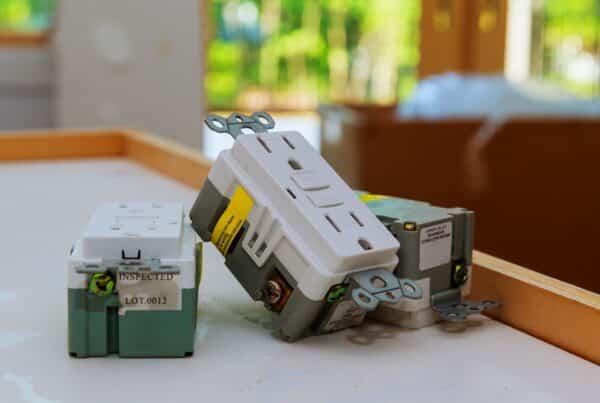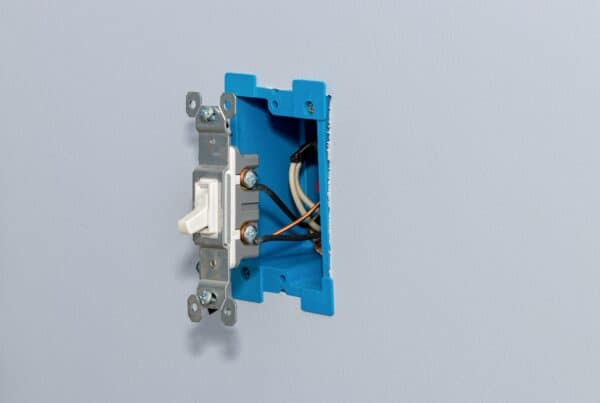
Naturally, keeping children safe at home is a parent’s top priority. As they begin to explore and interact with their environment, one of the best ways to prevent accidental injury is through utilizing a tamper resistant outlet.
While they may look similar to traditional outlets, tamper resistant receptacles have a built-in safety mechanism that prevents electricity flow when foreign objects are inserted. This protects against electrocution and electrical burns. In this article, we’ll explore how these outlets work, why they are vital for child safety, how to properly install them yourself, and when to call an electrician.
Why Is This Important?
Installing tamper resistant outlets is one of the most effective ways to protect curious young children from electrical hazards in the home. According to the Electrical Safety Foundation International (ESFI), over 2,400 children each year receive medical treatment for shocks and burns resulting from inserting objects into electrical receptacles. Tragically, these accidents can also be fatal.
Between 2000-2016, there were an estimated 72 electrocutions of children under the age of 15 due to interactions with electrical outlets. The majority occurred in children between the ages of 1 and 4 years old.
Tamper resistant outlets provide an invaluable safeguard by preventing electricity flow unless a proper plug enters. This stops children from receiving dangerous shocks. Simply installing plastic safety covers is not enough, as studies have shown children as young as 2 years old can remove them.
The National Electrical Code (NEC) now mandates tamper resistant outlets be installed in all new home construction. They recommend using them to replace traditional outlets in existing homes as well, especially those with infants and young children.

How Does A Tamper Resistant Outlet Work?
A tamper resistant receptacle may look nearly identical to a traditional outlet at first glance. However, inside there is a special safety mechanism.
The outlet contains spring-loaded shutters that block the contact holes when nothing is plugged in. This prevents children from inserting fingers or foreign objects that could come into contact with electricity and cause shocks or burns.
The shutters only open when equal pressure applies simultaneously to both slots, which occurs when an electrical plug inserts. The plug’s prongs push the shutters out of the way, allowing contact to be made and electricity to flow through the outlet.
Once you remove the plug, the spring-loaded shutters immediately close again. This blocks access to the contact points until there is another plug.
The safety shutters are also designed to be highly durable, preventing them from being easily damaged or overridden even with force. This makes tamper resistant outlets much more effective than outlet covers at preventing electrical accidents.
Installing a Tamper Resistant Outlet
Putting in a tamper resistant outlet is a straightforward process that a homeowner can safely DIY when the power is off. Here are the steps:
1) Turn off power to the outlet at the main circuit breaker. Verify it’s off by plugging in a tester or lamp.
2) Remove the existing outlet’s cover plate screws and pull the outlet from the electrical box.
3) Disconnect the wires from the old outlet. There will likely be three – hot (black), neutral (white), and ground (green or bare copper).
4) Connect the same three wires to the matching colored screws on the new tamper resistant outlet: hot to brass, neutral to silver, ground to green.
5) Push any excess wire back into the electrical box. Make sure wire sheathing extends inside.
6) Secure the new outlet inside the box and reinstall the cover plate.
7) Flip the circuit breaker back on to restore power.
8) Test that the outlet is working correctly by plugging in a lamp. The tamper resistant shutters should prevent a finger from entering.

Ongoing Electrical Safety
Installing tamper resistant outlets is one vital step for home electrical safety, but regular maintenance and updating older electrical systems is also essential. Here are some other important recommendations:
- Test GFCIs (ground fault circuit interrupters) monthly by pressing their “test” button to ensure they trip and cut power when they detect abnormal current flows. This ensures they’re functioning properly to prevent shocks.
- Inspect all outlets and switches regularly for signs of damage, overheating, or arcing that could indicate an unsafe wiring issue. Immediately discontinue the use of any questionable electrical components.
- Note any circuit breakers that frequently trip, pointing to an overloaded circuit. Avoid plugging high-wattage appliances like hair dryers or vacuums into outlets on these circuits.
- Have an electrician inspect your electrical panel to ensure it aligns with your home’s needs. Older panels may need upgrading to 100+ amps.
- Check that all metal junction boxes and conduits are properly grounded for safety. Update ungrounded systems.
- Consider installing arc fault circuit interrupters (AFCIs) and whole home surge protectors for optimal electrical fire and surge protection.
- Ensure all electrical work is done by licensed professional electricians, never attempt DIY electrical repairs.
When to Call a Professional
As a rule of thumb, you should have a professional electrician handle any service panel or wiring upgrades, replacements, or repairs. Altering early electrical systems improperly can increase fire risks. Additionally, have them inspect your entire electrical system periodically to catch any lurking hazards like faulty wiring or overloading.
If you continually have tripped circuit breakers, blown fuses, flickering lights, or outlets/switches that are hot or make crackling noises, these indicate potentially dangerous wiring issues. Discontinue their use and call an electrician right away for assessment and repairs. Likewise if you experience any sparking, smoking, or burning smells from electrical components.
For installing new lighting fixtures, outlets, or switches, only electricians should handle the wiring connections. However, you can do the basic mounting/securing of the components. Seek experts for any doubts – safety is paramount when dealing with home electricity.
Conclusion
Tamper resistant outlets are essential safety devices that can help prevent electrical fires, shocks, and electrocutions. Their built-in shutters stop foreign objects from making contact with electricity when inserted into the receptacle. This protects curious children, who are at high risk for these accidents.
However, tamper resistant outlets benefit all homeowners! Combined with regular electrical maintenance, they help ensure your home’s system operates safely for years to come. Don’t wait to reap the benefits of tamper resistant outlets. To learn more about your home’s electrical system or schedule an in-depth inspection, reach out to All Coast Home Inspections in Houston, TX, and surrounding areas today.



